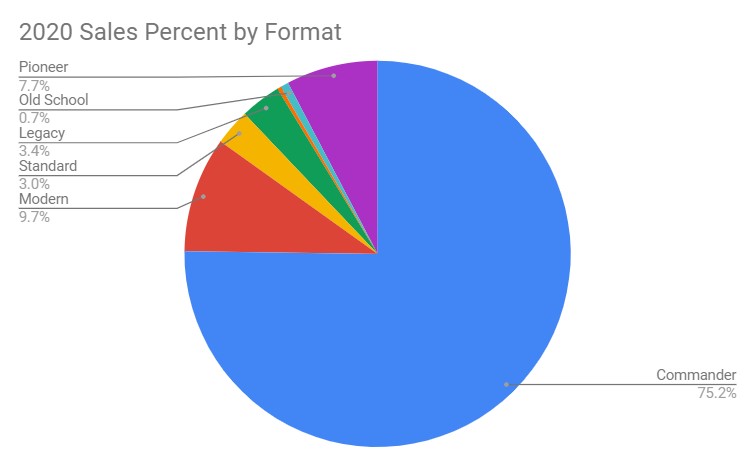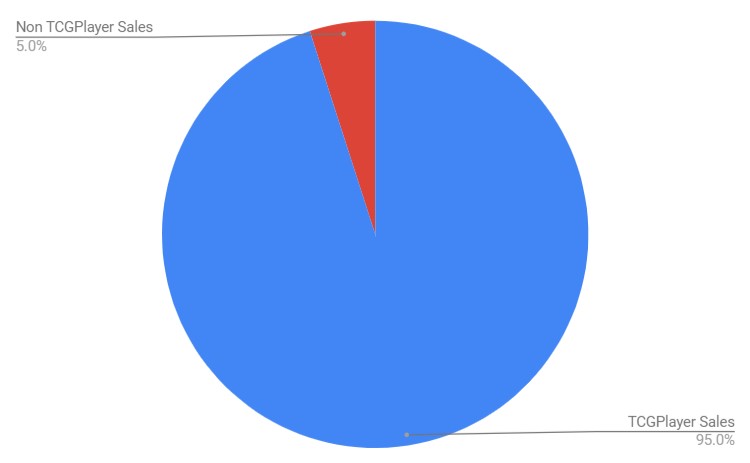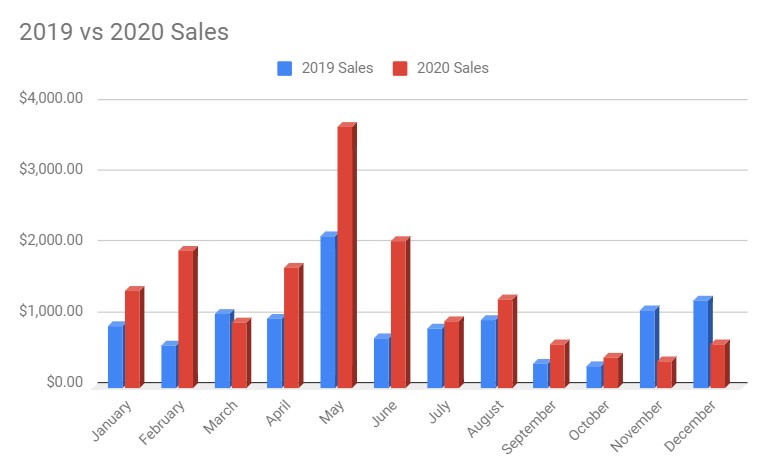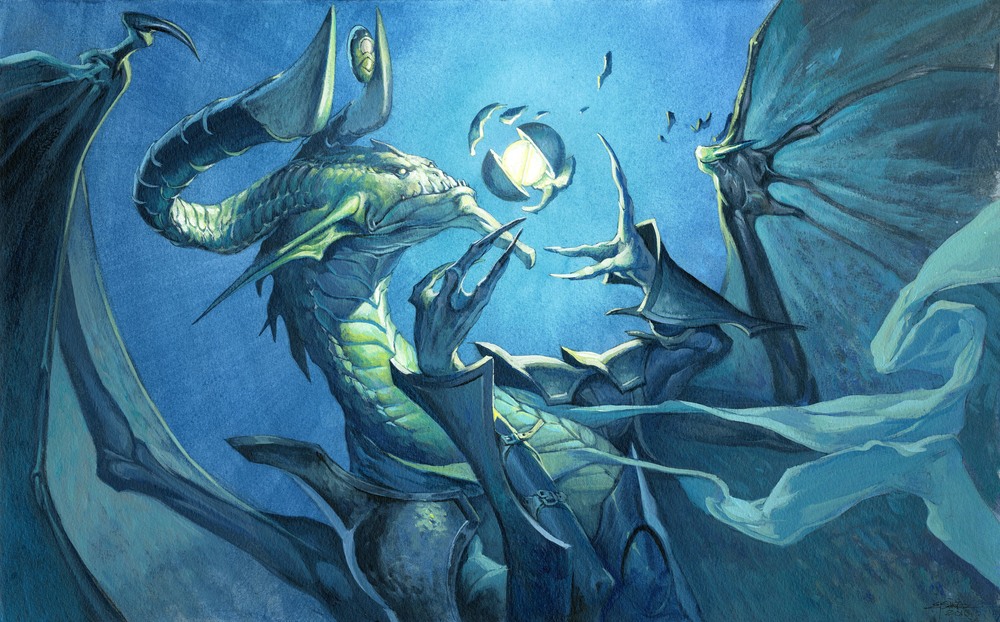Are you a Quiet Speculation member?
If not, now is a perfect time to join up! Our powerful tools, breaking-news analysis, and exclusive Discord channel will make sure you stay up to date and ahead of the curve.
This year has been crazy, to say the least. COVID-19 completely turned the world upside down and the new normal isn't like any normal in recent history. There were a lot of negatives this year, but I know that many of us running MTG stores out of our homes have likely had a good year; especially those whose focus is on Commander. It certainly helps that even before the pandemic, WotC had already deemed 2020 to be the "Year of Commander", so we would have expected a lot of sales tied to the format.
Anyone who has read my previous articles related to my actual online storefront know, I like to keep pretty detailed records of my transactions. There is a reason that Google and Facebook are highly valuable and highly profitable companies and yet most consumers get their products for free. Data has a lot of value and hopefully, after reading this article, any of you who don't keep records or keep minimal records may want to adjust that strategy moving into 2021. Below is a screenshot of my sales datasheet which I fill out after every order;

For those who remember my "Optimizing Fulfillment" article it actually takes me a decent amount of time to fill this out, particularly the purchase price field as I often have to dig through my records to find that information. This step can add between 20 and 80 seconds to an order, which is a lot of time if you have a lot of sales in a day. Though it may not even seem worthwhile at the time, it pays dividends in the long run.
The whole reason I perform this task throughout the year is so that I can review the data at the end of the year. I should mention that I keep a similar datasheet for my expenses which has made finding the "purchase price" a whole lot easier.
Sales by Format

Here's my 'sales by format' pie chart. As you can see, Commander accounted for 75.2% of my overall sales this entire year compared to 2019, where it accounted for 44.9% which is a significant difference. What's more interesting is that the Pioneer format accounted for only 7.7% of my overall sales, despite the fact that last year it was introduced as a format in Q4 and managed to make up 11% of my overall yearly sales numbers.
However, given that paper events have been virtually non-existent all year, it makes sense that the majority of sales in 2020 are for a format that can be played casually at the kitchen table rather than at an LGS or major event. What isn't surprising is the minimal sales for Standard and Old School, as these are both formats I tend to avoid purchasing inventory for.
The reason I find this data so important is when I buy inventory. If you know what you've been selling, you'll have a better idea of what to keep buying. This seems obvious, but it's important to keep in mind that if you only list a certain format's staples, then you can create a feedback loop with this type of data. In 2019 I had almost 34% of my sales come from Modern demand, so I have a fair amount of Modern inventory that clearly isn't moving.
Sales Avenue

While the sales avenue isn't data I typically lean on for any meaningful interpretation, it does give me a good idea of where my sales are coming from. I should note that I haven't listed anything on Amazon or eBay this year, so my non-TCGplayer sales are almost always either Facebook or local sales. I will differentiate between the two for next year, but my latest chart shows me that I rely heavily on TCGplayer for most of my sales and it might be smart to diversify my sales venues.
Expenses

You can't have sales without expenses and I think it's equally as important to track your spending. I should mention that when it comes to expenses, I do have a "personal" category which is when I buy cards or boxes for my own personal use with no intention of selling the cards. Interestingly enough, my 2020 Personal expenses are actually up by around 5% compared to 2019. This isn't surprising, given the only format I really play anymore is Commander, and a lot of Commander cards came out this year.
My business expenses are up by 19% this year; I purchased a lot of stamps after some stellar sales months in April, May, and June and orders slowed down after June, so I have plenty of stamps for 2021. Lastly, my Store Inventory and Speculation are down by 17% and 7% respectfully. This makes sense as I have been focusing more on selling cards I had previously acquired and with WotC's drive to keep pumping out new products I have been far more hesitant to speculate on cards than in the past.
Yearly Sales Comparison

My last graph is a comparison bar chart between monthly sales in 2019 and 2020. Overall, 2020 had significantly higher sales volumes than 2019 for every month but November and December, which if you'll, recall Pioneer was announced October 21, 2019. I imagine many sellers like myself got a nice spike in sales going into the 2019 Holiday Season thanks to the new format.
It's also important to notice that May has repeatedly been my best sales month 2 years in a row. While only 2 years' worth of data isn't really a lot to go by, if this trend is accurate, it means I should make sure to buy more aggressively in April to make sure I have the most inventory available for May.
Conclusion
While 2020 has been a trying year for the whole world, it has been a good year for selling Magic cards. Hopefully reading over this and looking at my data, you get a picture of why it's important to track this type of information and get a better understanding of the value of the data itself.





